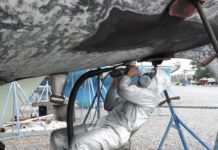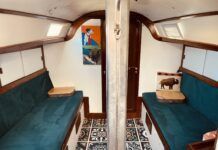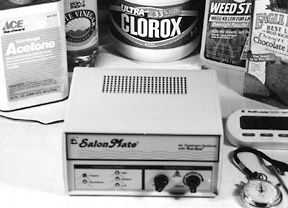Slightly more than 10 years ago, Practical Sailor took note of the odor- and mildew-destroying capabilities of a machine called an ozone generator. In the December 1990 issue, it was reported that a little box made by a fledging Rhode Island company called Quantum Electronics (now called Quantum Pure Aire Corp.) did a marvelous job of deodorizing Practical Sailor’s then newly-purchased test boat, a much-neglected C&C 33 loaded with slime and mildew. Further extended tests in the office and in staff members’ homes resulted in a rave review.
Reader response was immediate. Some bought one of the expensive ($445) machines. A few reported that ozone, in heavy concentrations, could be a respiratory irritant.
In an extensive follow-up report in the August 15, 1991 issue, the positions of OSHA, the FDA, and EPA were explained, along with the fact that ozone generators are widely used in Europe, not just to remove odors, but to control bacteria in hospitals, doctors’ offices and in food production facilities. Neither Quantum nor Practical Sailor has made or will make any claims as to ozone’s health benefits.
Quite quickly thereafter, the Quantum machine appeared in chandleries and in most marine discount catalogs. Practical Sailor’s machine was loaned out frequently and notes kept of reactions.
Despite their expense, the machines (there now are a half dozen different models) have proven popular. Available now in eight basic sizes (depending on the space involved), they come in 110V and 12V versions. Power draw is a bit over one ampere—well worth it aboard boats where battles are raging against mold and mildew.
Quantum’s newest trick is interesting. Three models have been introduced with sensor units, which make it unnecessary to have a machine on a timer or use it manually. The machines run continuously in a low-power mode, which draws air over the sensor. (The sensor elements are standard items increasingly seen in “sniffers” of all kinds. They can be combined and customized in many configurations.)
When the sensor module detects any of hundreds of offensive or toxic odors, it kicks in the generation of O3 molecules that go immediately to work eliminating the odor. When the odor is dealt with, the machine drops back to “guardian” mode. The ozone disappears quickly. LED lights indicate when the odor goes from “high” to “medium” to “low” to zero. The new machines, which weigh but four pounds and are 4″ x 6″ x 8″, also can be operated manually.
Testing Quantum’s new Salon Mate was fun, but it required three human noses (working in relays to keep them fresh), to check for detectable odors. A couple of noses had long been calibrated to detect minute traces of cigar smoke, pool cue chalk and other even more precipitable odors.
A small, enclosable workroom first was checked carefully for clean air, by nose and with the machine.
The Salon Mate, running in “guardian,” was placed on the floor, with several thicknesses of paper towels about three feet away.
The first test was a tough one. A tablespoon of acetone was poured on the paper towels and a split-time stopwatch was started.
The strong odor spread immediately. The machine’s sensor, which Quantum calls a Puri-Stat, detected it in less than two seconds, turned itself on and displayed a warning light. Although the acetone odor was gone in about six minutes (according to the human noses), it was 42 minutes before the machine indicated “all clear.” The machine popped back on several times, showing low levels, before finally going to sleep.
With white vinegar, the odor was detected in seven seconds, gone to the nose in two minutes and green-lighted by the machine in 9-1/2 minutes. Clorox, which tends to dissipate rapidly, was detected in three seconds and greenlighted in six minutes.
Several other common liquids were tested with similar results, with the toughest one to combat being broadleaf weed killer (dimethylamine salts), which has an oily, acid odor that is both pungent and persistent. The machine detected it in a second, but took nearly an hour to rid the area of the last traces.
In a final test, the machine was pitted against a bread-making machine stoked with a package of Eagle Mills Chocolate Nugget Dessert Bread, a conconction known to fill a house with a powerful chocolate odor much preferable, after a long day of sniffing, to acetone.
Set up in the usual manner, the ozone machine was turned on at the end of the bake cycle. It hadn’t been in stand-by, so it immediately detected “contaminated” air. The odor was eliminated completely, throughout the house, in about 45 minutes—a pity, because the odor is the best thing about Eagle Mills Chocolate Nugget Dessert Bread.
Quantum’s Salon Mate (www.bilgebuster.com) comes in three models. The case is the same size for all (the number of ozone-generating plates is what’s different). The 1,000 square-footer sells for $469, the 1,800 square-footer $539, and the 3,500 square-footer $619.
Contact— Quantum Pure Aire Corp., 205 Hallene Rd., Warwick, RI 02886, 800/966-5575.







































I realize this is an old article, however, I have an older boat that came with two Bilge Busters. There is also a carton of what appear to be cartridges that goes with them. I cannot locate any control switches nor is there a operating manual. I have searched the internet with no results. Can you assist in anyway?
Thank you,
Joe Dempsey